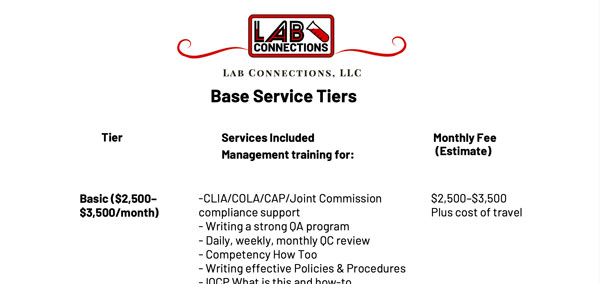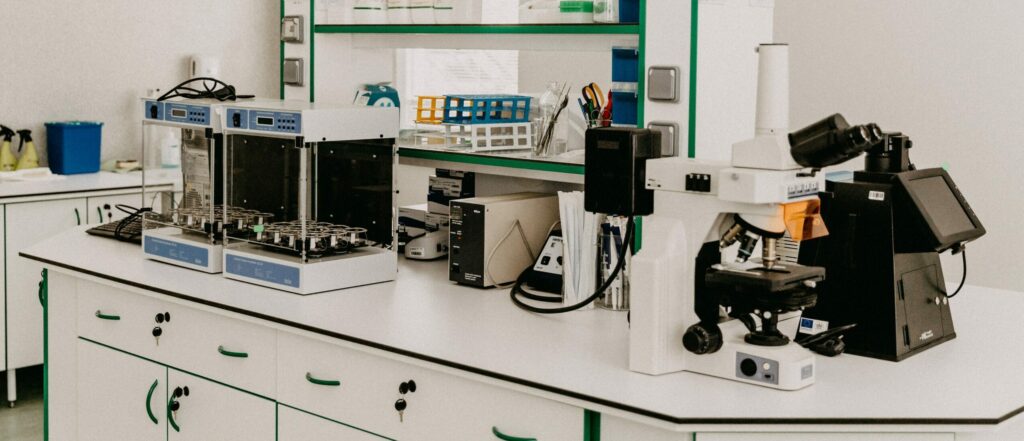Lab Connections specializes in seamlessly integrating Six Sigma principles into your laboratory’s operations, ensuring a smooth transition with minimal interruption.
Our approach begins with a comprehensive assessment of your lab’s current processes, pinpointing areas that need improvement without overwhelming your staff. We then offer customized, practical training programs designed to teach key Six Sigma concepts and methodologies tailored to your lab’s unique needs.
Our support extends to project selection, providing guidance on manageable projects that align with your lab’s goals, as well as ongoing project support for data analysis and problem-solving. We also assist in managing cultural and organizational changes associated with Six Sigma adoption, ensuring buy-in from your staff.
Through our expertise, we help you establish key performance indicators, implement a culture of continuous improvement, seamlessly integrate Six Sigma principles into your lab systems, and simplify documentation and reporting processes.
Review of QC data daily, weekly, and monthly
Generate analysis report of lot-to-lot comparison data following the onboarding of new lots and shipments of reagents, in order to verify parameters of statistical means and standard deviations are set appropriately
Reports from new lots will be sent to Management for final approval
Determine from a survey of data if systematic and random errors were evaluated correctly and troubleshooting was properly performed
Provide reports to management of necessary corrective actions, or corrective education
Provide necessary support and education for QC evaluation and troubleshooting to reduce costly wasted time and materials
Lab Connections is your partner in modernizing QC processes, delivering cost-effective solutions, and keeping your lab at the forefront of quality assurance.
At Lab Connections, our commitment to quality is reflected in our comprehensive set of quality benchmarks. We prioritize accuracy, ensuring that our services and products consistently meet specified accuracy standards and deliver reliable results.
Timeliness is a key element of our service, and we take pride in delivering within agreed-upon timeframes and deadlines.
Customer satisfaction is paramount, and we actively measure and improve it through feedback and surveys, tailoring our services to meet our clients’ evolving needs. Regulatory compliance is non-negotiable, and we diligently ensure adherence to industry-specific regulations and standards. We’re committed to error reduction, implementing robust strategies to minimize errors and defects.
Our dedication to continuous improvement is ingrained in our culture, allowing us to evolve our processes and services continually. Data security and privacy are paramount, and we take stringent measures to protect sensitive information and maintain compliance with data security regulations. We maximize resource utilization, efficiently managing personnel, equipment, and materials to optimize our operations.
We provide expert level assistance with Quality Control Design. A comprehensive QC plan is integral to the modern lab. The accuracy of machine-derived patient data depends on the effectiveness of the processes used to measure, analyze, correct errors and document the course of action. QC education and teamwork offers confidence that providers are getting the right answers for their patients.
Systemic bias can creep into processes, causing a shift in accuracy that can be painful to track down and decipher at a later date.
This can result in:
This method of in-depth analysis and correction of procedure leads to fewer errored results and fewer wasted resources.
We approach the QC question with a broad view to evaluate how all the pieces of the puzzle come together by providing:


Quality improvements were achieved through collaboration between the Lab Connections team and Laboratory Staff, verifying the accurate transmission of patient results to healthcare providers and fostering staff confidence in delivering precise diagnostic testing. Statistical analysis of the Six Sigma metric, coefficient ratio, and standard deviation index from peer evaluations were employed to measure the progress […]
[...]
Lab Connections is pleased to announce that, with our guidance and collective efforts alongside lab management we have successfully demonstrated a marked improvement in quality while simultaneously realizing a reduction in operating costs over the period of February 1st to April 30th, 2023. This accomplishment has resulted in a measured cost reduction of $4900 in […]
[...]Lab Connections offers comprehensive policy, procedure, training, and consultation services tailored to your lab’s unique challenges. We address workflow inefficiencies, financial bottlenecks, and communication gaps to significantly increase profitability.
© 2025. Lab Connections, LLC. All rights reserved.
Enhance Your CLIA Regulation Knowledge!
Access Our On Demand Webinar and Free Resources
Grab your free tools now!
Need Help Navigating the New Regulations? Request Your Free Consultation Today!
Offer available for a limited time. Terms and conditions apply.
Education and processes implemented to ensure that QC management and regulatory requirements are met: